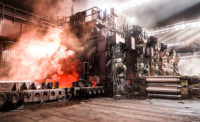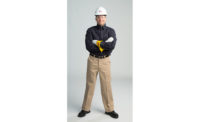Protecting against flash fires
Disproving 4 myths about FR garment base layers

For safety managers in the oil & gas industry, flame resistant (FR) personal protective equipment (PPE) is an indispensable tool to help mitigate daily flash fire hazards. Given the variety of FR PPE options, it can be hard to understand the needs of your specific job site while sorting through the vast amount of information surrounding flash fire protection. It can be easy to remain with the status quo and not explore new and emerging options to bolster your FR apparel program.
An FR base layer is one such garment. When incorporated into an FR apparel system, it can provide benefits beyond what the name might suggest. As we disprove four myths surrounding this specific type of garment, we encourage you to analyze how FR base layers might enhance your FR system and even help foster a culture of responsible PPE use.
Myth 1: It does not matter what you wear underneath FR garments.
Simply stated, it matters a great deal what you wear underneath your FR garments. For those in the oil & gas industry, NFPA 2113, the companion standard to the consensus standard NFPA 2112, requires undergarments or base layers be made of flame resistant or non-melting fabric.
So, while it is sufficient to wear non-melting fabrics like cotton, silk or wool, it is important to stay away from undergarments and base layers made with fabrics like acetate, nylon, polypropylene or spandex. These popular fabrics will melt when exposed to high temperatures consistent with a flash fire and can directly impact the insulation properties of FR garments. When these fabrics melt, heat is transferred to the skin, which can cause severe and even life-threatening burns.
Safety managers have the opportunity to increase the overall protection level of an FR garment system by adding an FR base layer. FR base layers help meet the requirements of NFPA 2113 with an approved, non-melting fabric that also helps mitigate repercussions of a flash fire incident. In addition, an FR base layer creates additional air gaps between layers of FR garments, increasing thermal insulation and heightening a system’s ability to provide insulation from second- or third-degree body burns.
Myth 2: If you wear FR base layers, you can wear any type of outer layer garment.
The hallmark of FR fabrics is that they will self-extinguish when a thermal source, like a flash fire, is removed. For FR fabrics to play their part in overall flash fire protection, it is important that flammable fabrics don’t ignite should an incident occur. Flammable fabrics, as the name suggest, will continue to burn even after a flame is removed — compromising the self-extinguishing properties of FR garments.
Regardless of if you are wearing an FR base layer, you must ensure the outermost layer of the garment system is FR to comply with NFPA 2113. This outermost layer must cover any compliant but non-FR fabrics, so they will not ignite and continue to burn after a flash fire is over.
Myth 3: Another layer makes FR PPE less comfortable.
Enabled by advances in FR fabric technology, FR base layers now incorporate performance and comfort benefits once unthinkable in FR workwear. Some FR base layers can offer comfort-related benefits, like moisture-wicking and breathability properties. These base layers can provide additional warmth in the wintertime, helping to draw moisture away from the skin so a chill does not set in when a worker takes a break from a strenuous task. In the summer months, the same principle is applied to help wick sweat from the skin, allowing the body to better regulate its temperature.
FR base layers can enhance the overall wearability of an FR garment system, ideally balancing necessary protection and comfort characteristics to help foster a want-to-wear experience.
Myth 4: Daily wear
Garments, like FR base layers, cause workers to be more complacent about using their other task-based PPE.Using daily wear FR PPE can actually encourage workers to be more engaged with PPE use in general. Knowing that your workers carry a measure of consistent FR protection can complement worker engagement with the safety process. While FR daily wear is worn throughout the workday, other PPE like gloves and headgear, is worn only when the task demands and must be donned through conscious thought. Since FR daily wear, like shirts and pants, is worn throughout the day, it stands to reason that it can act as a reminder to don other task-based PPE as needed.
Looking for a reprint of this article?
From high-res PDFs to custom plaques, order your copy today!





